The highest mountains in the world have a unique allure. A journey just to catch glimpses of these mysterious, remote, savage giants is the trip of a lifetime for many and, for mountaineers, they’re the ultimate challenge.
Rising to way above 8,000m, they stretch through the best part of the Earth’s troposphere, towards the thin air of the stratosphere, reaching heights usually associated with the cruising altitudes of airliners.
Up here, conditions are brutal (so your down jackets and winter gloves need to be top-class). The cold is fierce, the oxygen is depleted and nothing survives for very long.
All of the tallest mountains in the world are located in Asia, either in the Himalayas or the Karakorum ranges. Of the 10 highest, nine are found in Nepal, including the highest of all: Everest.
What is the highest mountain in the world?
The tallest mountain in the world is Mount Everest, at 8,849m (29,031ft) above sea level, in the Khumbu region of the Nepalese Himalayas.
The mountain attracts mountaineers and trekkers from around the globe and, while its easiest routes are technically straightforward by mountaineering standards, its high altitude makes climbing it a hugely dangerous undertaking.
It’s known to the Nepalese as Sagarmatha – loosely translating as 'The Head in the Heavens' – and to the Tibetans as Chomolungma (or Qomolangma) – loosely meaning 'Goddess Mother'.
Whatever the exact translations are, the local names are certainly more romantic than ‘Everest’, the name given to the mountain by the Royal Geographical Society in 1865 in honour of the surveyor George Everest, whose surname is actually pronounced eev-rist.
Interestingly, Everest is not the tallest mountain in the world from base to peak. That accolade goes to Hawaii’s Mauna Kea, which rises to 10,210m from bottom to top. So, why isn’t Mauna Kea cited as the highest mountain in the world? Well, around 6,000m of Mauna Kea is underwater, with 'only' 4,107m rising above sea level.
Then there’s Ecuador’s 6,268m-high Chimborazo, the summit of which, thanks to the Earth’s equatorial bulge, is the highest point from the centre of the planet and therefore the closest mountain to the stars.
What are the tallest mountains on each continent?
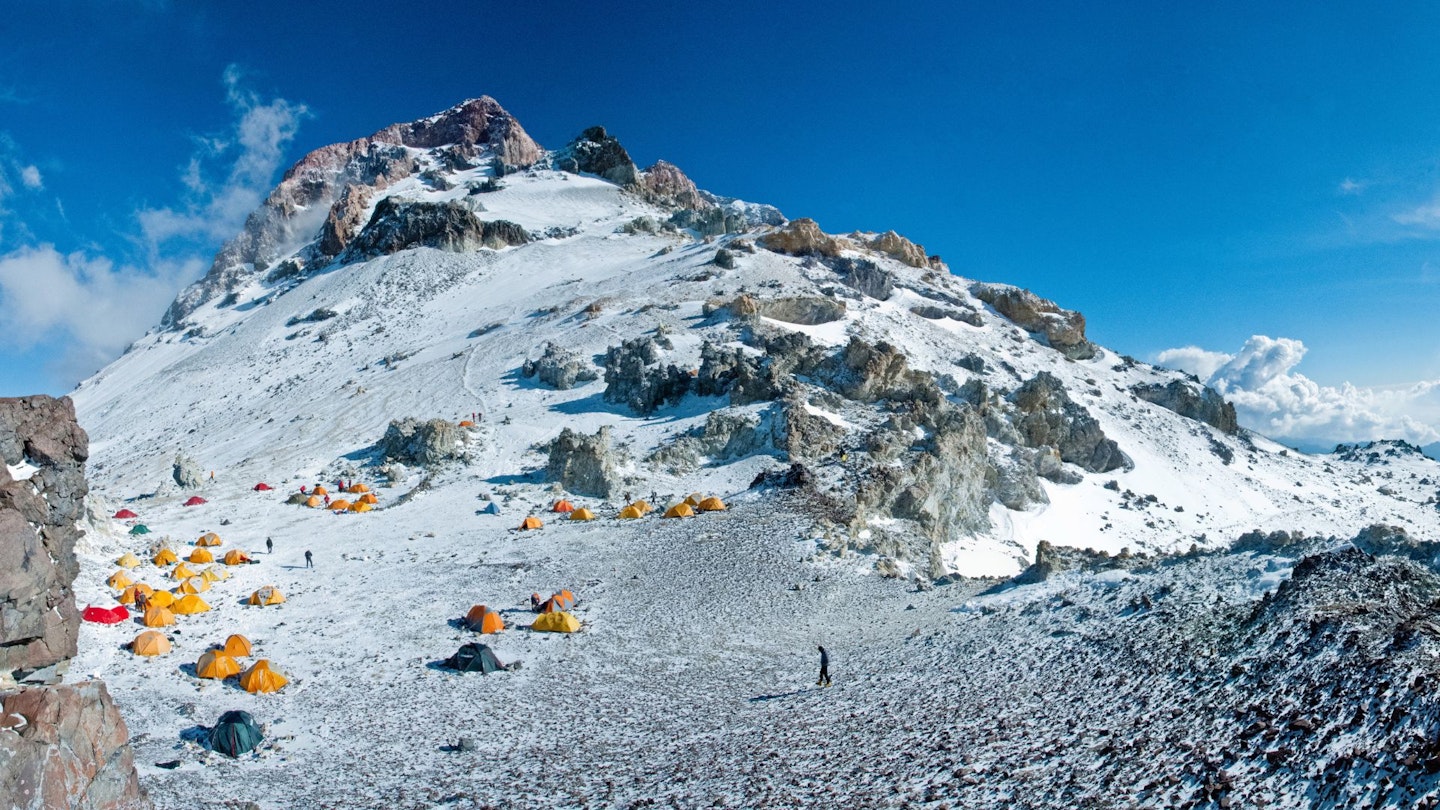
You may have heard of the Seven Summits, the seven highest peaks on each of the Earth’s separate continents. Many adventurous souls make it their mission to bag each of these special peaks. They are:
Asia: Mount Everest (8,849m)
South America: Aconcagua (6,962m)
North America: Denali (6,194m)
Africa: Mount Kilimanjaro (5,895m)
Europe: Mount Elbrus (5,642m)
Antarctica: Vinson Massif (4,892m)
Oceania: Puncak Jaya (Carstensz Pyramid) (4,884m)
Everest is, of course, the highest mountain in Asia and easily the tallest in the Seven Summits list, almost 2,000m higher than its next rival: Aconcagua. Rising above all else in the Andes, Aconcagua is South America’s highest peak.
The legendary Denali in Alaska is North America’s loftiest, measuring a whopping 5,500m from valley to summit and reaching a height of 6,194m above sea level.
Denali is closely followed by Africa’s iconic Mount Kilimanjaro, a massive dormant volcano and the world’s highest free-standing mountain.
Mount Elbrus, another dormant volcano, is Europe’s tallest mountain, located in the Russian Caucasus.
The vast, icy, polar desert of Antarctica is crowned by the Vinson Massif, while Oceania’s loftiest point is Puncak Jaya (the Carstensz Pyramid) on New Guinea, the world’s highest island peak.
The 10 highest mountains in the world
1. Everest, Himalayas, Nepal
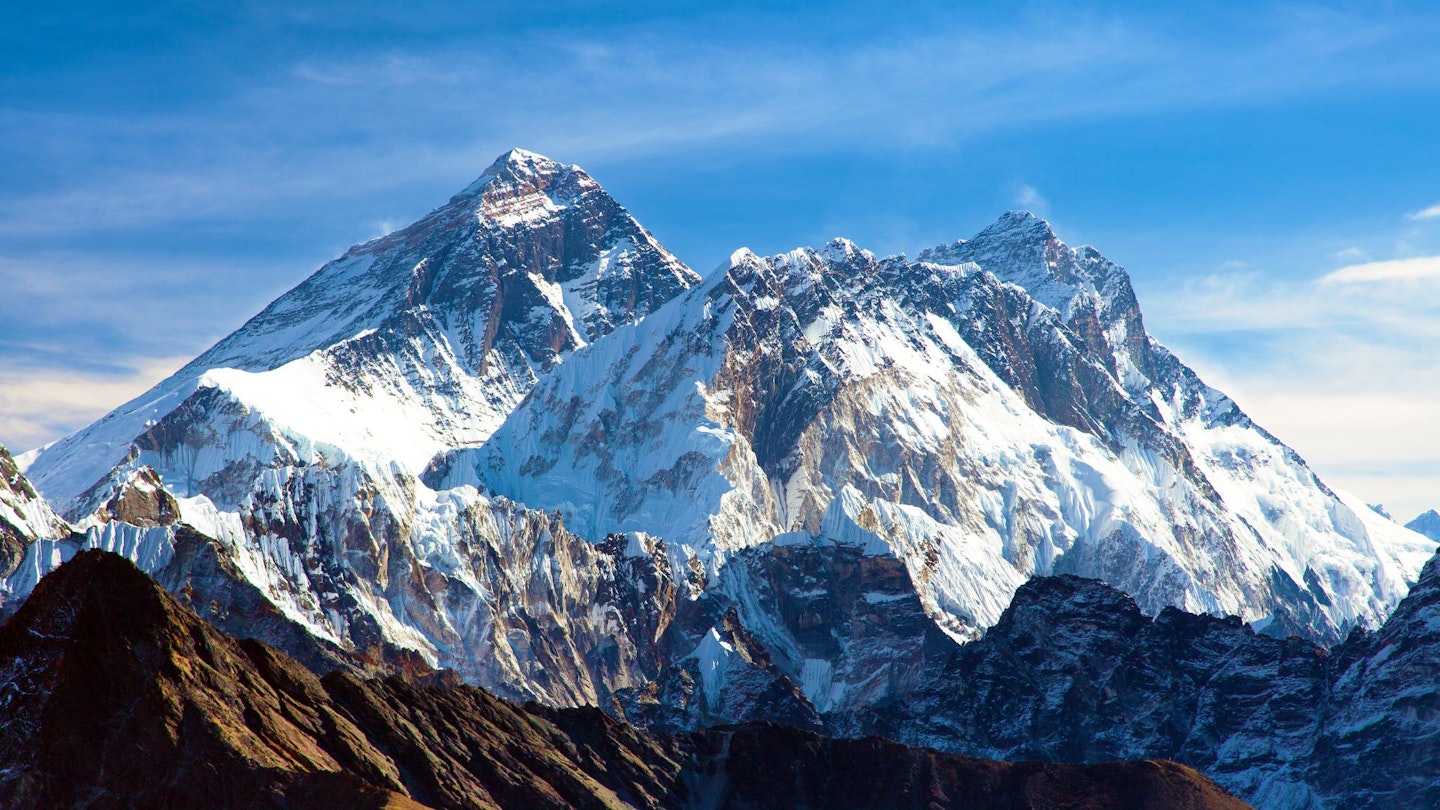
Height: 8,849m (29,031ft)
First ascent: 29 May 1953 by Edmund Hillary and Tenzing Norgay
The fact that Everest is the highest mountain in the world makes it an irresistible draw to so many. The subject of countless expeditions, daring adventures, stunning films and gripping novels, no other mountain on our planet holds such a fascination with the general public.
The stories and names associated with the mountain echo through time: George Mallory, Sandy Irvine, Edmund Hillary, Tenzing Norgay, Tom Hornbein, Willi Unsoeld, Junko Tabei, Reinhold Messner, Peter Habeler, Joe Taker and Pete Boardman, to name just a few.
These days, hundreds achieve the summit every year, most by the two main routes: the South Col Route from Nepal and the Northeast Ridge from Tibet.
It’s thought that around 300 people have died attempting to climb the mountain and many bodies remain unrecovered on the mountain. The wider Khumbu region is a hugely popular hiking arena, containing many world class hikes, including the iconic Everest Basecamp trek.
2. K2, Karakorum, Pakistan
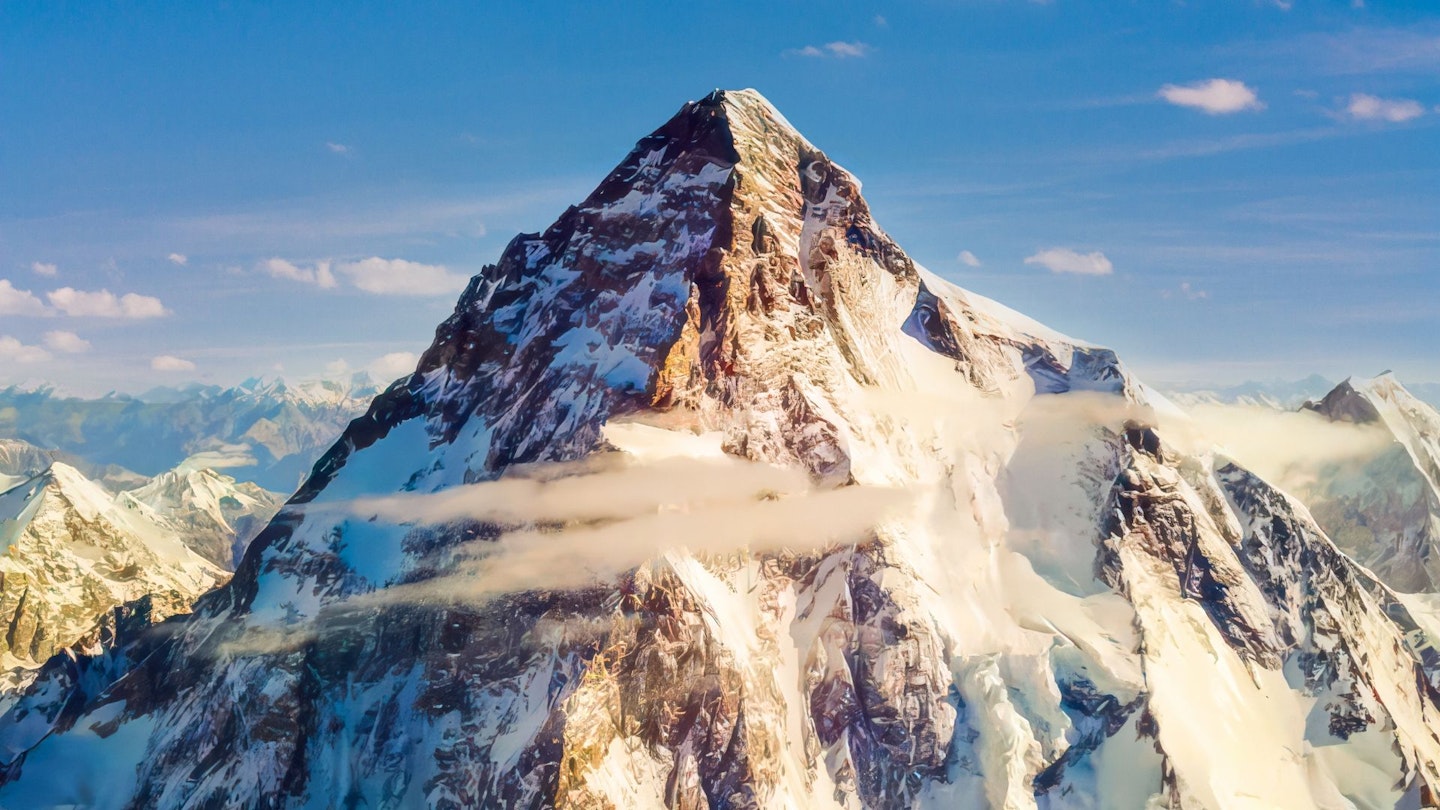
Height: 8,611m (28,251ft)
First ascent: 31 July 1954 by Achille Compagnoni and Lino Lacedelli
Cited as the 'Savage Mountain' and the 'Mountain of Mountains', K2 is the world’s second highest peak and one of its most dangerous. It’s also arguably the most spectacular of them all, an immense, soaring pyramid that calls like a siren to the mountaineering’s elite.
Located in Pakistan’s Karakorum range, it’s so remote that the original Western surveyors exploring the region couldn’t find a local name for it. So, they temporarily titled it K2: K for Karakorum and 2 because it was the second prominent peak in a sketch by surveyor Thomas Montgomerie. The name stuck.
The Italians claimed the first ascent, via the Abruzzi Spur, in 1954. Achille Compagnoni and Lino Lacedelli achieved the summit but it was the efforts of Walter Bonatti and his Hunza companion Amir Mehdi, forced into a controversial bivouac high up in the Death Zone, that have gone down in mountaineering folklore.
For many years, the glittering prize of a winter ascent alluded the world’s leading mountaineers until a successful Nepalese expedition, led by Nims Purja, placed 10 climbers on the summit in January 2021.
3. Kanchenjunga, Himalayas, Nepal
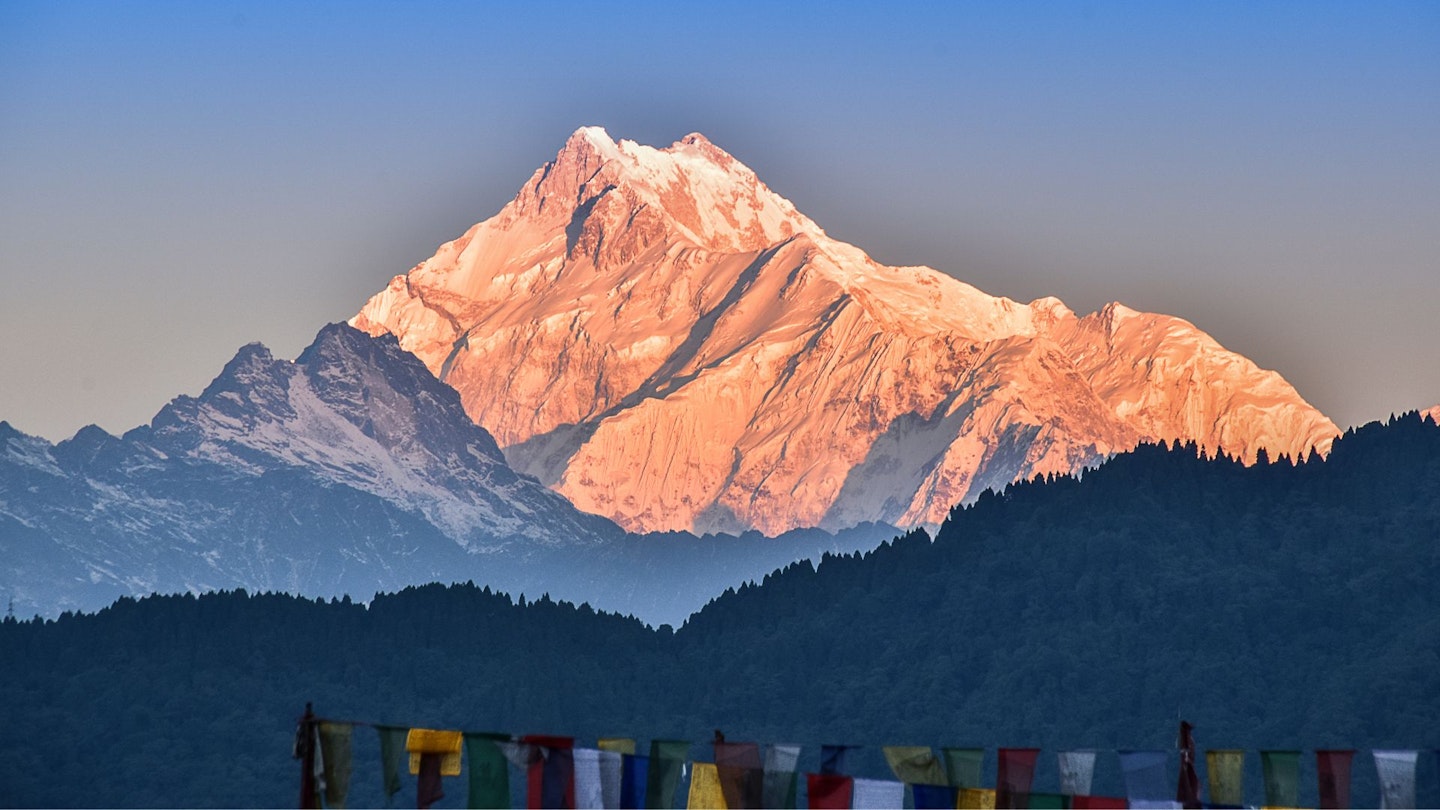
Height: 8,586m (28,169ft)
First ascent: 25 May 1955 by Joe Brown and George Band
Kanchenjunga, the world’s 3rd highest mountain, occupies the border between eastern Nepal and India and was once thought to the highest of them all.
It’s the only one of the world’s 8,000m summits that the British can claim to have been the first to stand on, although some would point out that Hillary and Tenzing Norgay’s 1953 Everest success was as part of a British expedition.
Nevertheless, the first Britons to stand on one of the tallest mountains in the world were Joe Brown and George Band on Kanch (as it’s affectionately known) in 1955. As the mountain is sacred to the Indian Sikkim people, Brown and Band stopped just short of the very summit.
4. Lhotse, Himalayas, Nepal

Height: 8,516m (27,940ft)
First ascent: 18 May 1956 by Fritz Luchsinger and Ernst Reiss
It could be argued that Lhotse is not a separate mountain, as it’s at the centre of the gargantuan Everest massif, which also contains the prominent Nuptse (7,861m), as well as the tallest mountain in the world.
From Everest basecamp, Lhotse rises at the centre of the Everest, Lhotse, Nuptse horseshoe, its stark walls rising high above the Western Cwm. The most popular route that mountaineers take when climbing Everest climbs the Lhotse Face on the way to the South Col, before the brutal push up to the famous summit.
In 2013, British Everest guide Kenton Cool, along with climbing partner Dorje Gylgen, pulled off the Triple Crown, summiting Nuptse, Everest and Lhotse in just seven days without returning to basecamp. They were the first to ever achieve the feat.
5. Makalu, Himalayas, Nepal
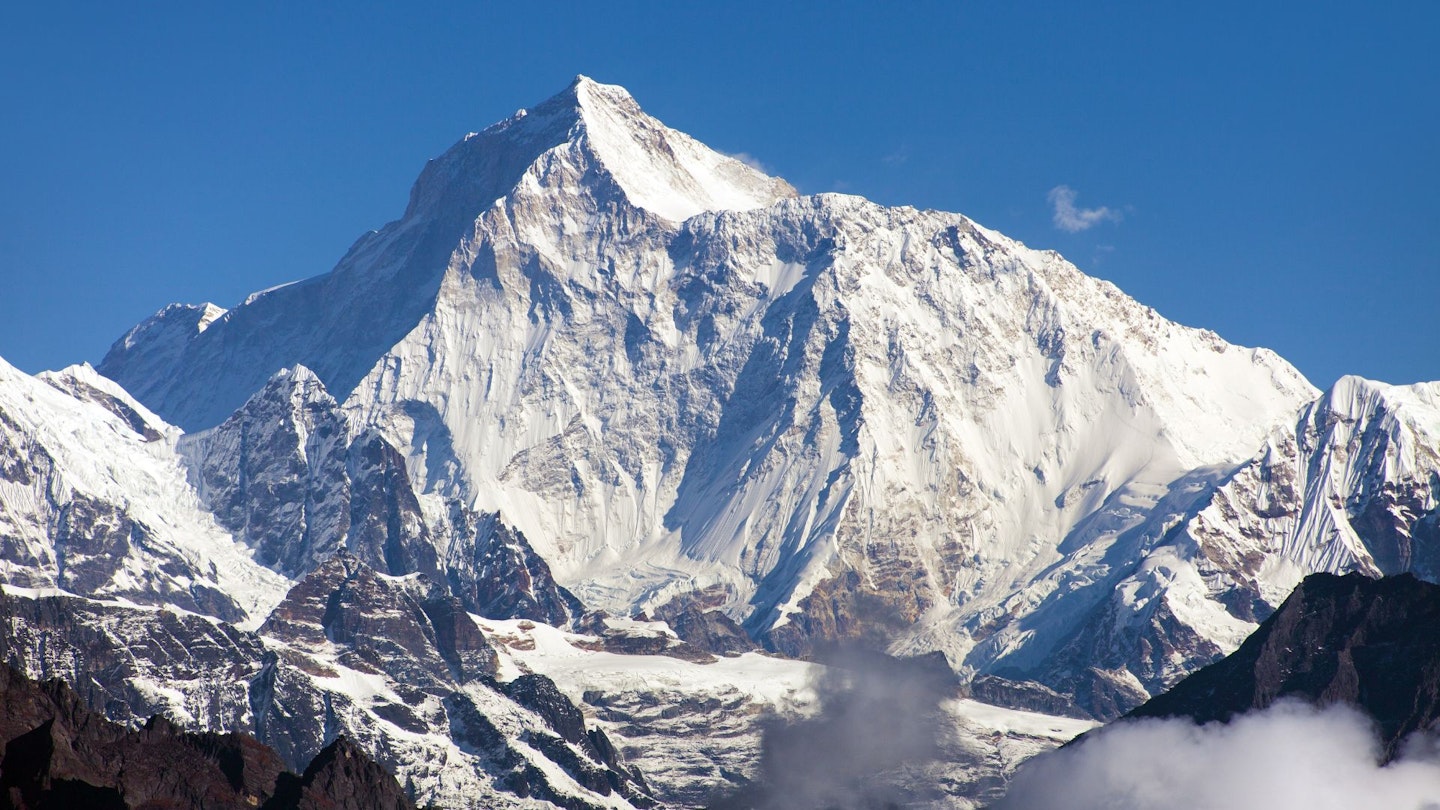
Height: 8,485m (27,838ft)
First ascent: May 15 1955 by Lionel Terray and Jean Couzy
The stark pyramid of Makalu rises in majestic isolation above the Mahalangur Himal, its summit daggering towards the heavens. Located just 12 miles from Everest, the world’s fifth highest mountain is a true giant and one of the more mysterious, lesser-known peaks in this list.
Makalu is thought to have claimed the lives of around 50 mountaineers, many attempting the peak without supplementary oxygen, a bold undertaking considering almost 500m of the mountain is above the 8,000m Death Zone mark.
Among the notable climbs on Makalu is Polish legend Jerzy Kukuczka’s staggering, solo, lightweight alpine style ascent of its West Face and Northwest Ridge in 1981.
6. Cho Oyu, Himalayas, Nepal
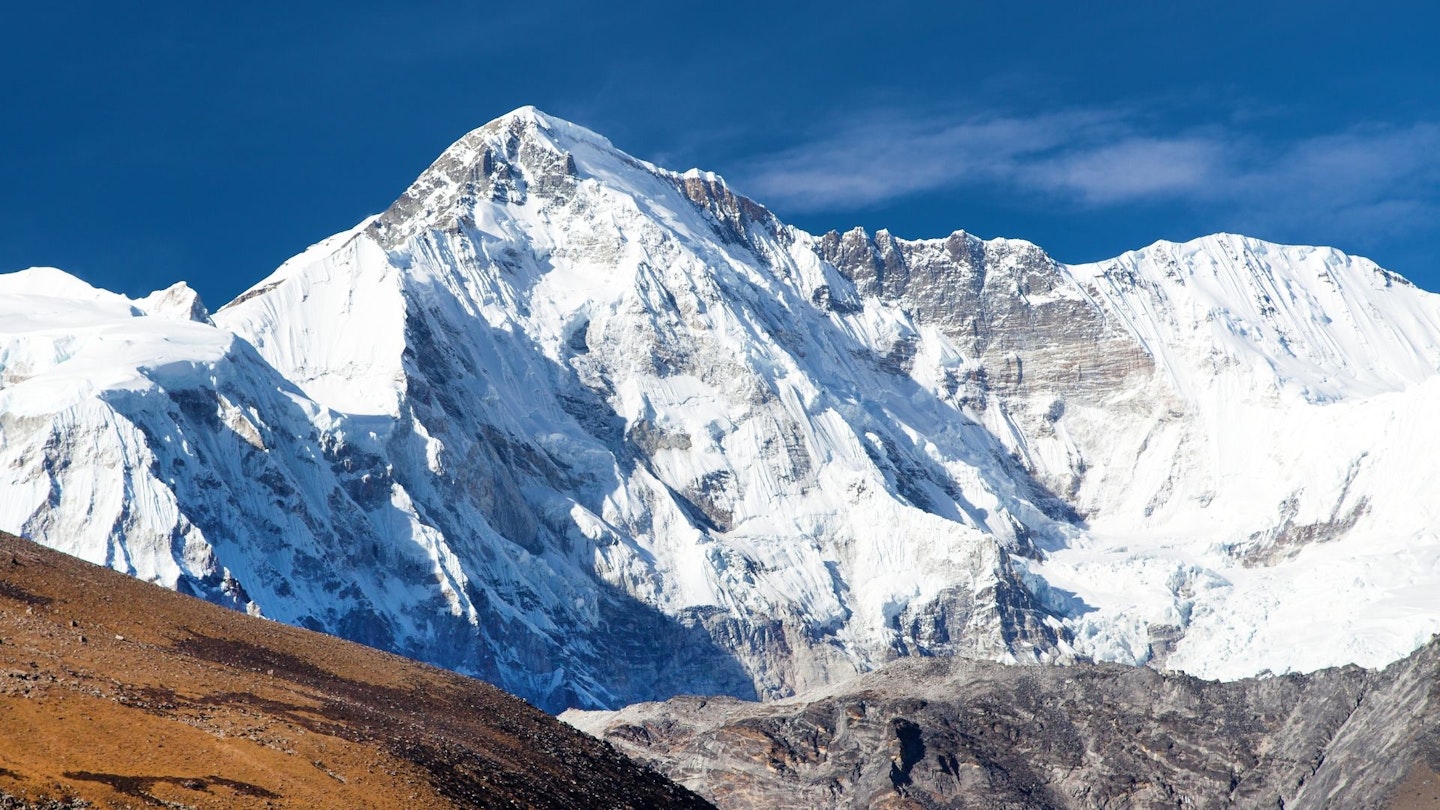
Height: 8,188m (26,864ft)
First ascent: 19 October 1954 by Herbert Tichy, Joseph Jöchler and Pasang Dawa Lama
A colossal mountain in the Khumbu region, Cho Oyu is often cited as being the easiest of the world’s fourteen 8,000m peaks to climb. Of course, easy is very much a relative term when it comes to high-altitude mountaineering.
However, to put this into context, the death to summit ratio on Cho Oyu is around 25 times less than on Annapurna, arguably the most challenging of the world’s tallest mountains. It’s this relative ease that makes Cho Oyu the second most climbed 8,000m peak, after Everest.
7. Dhaulagiri, Himalayas, Nepal
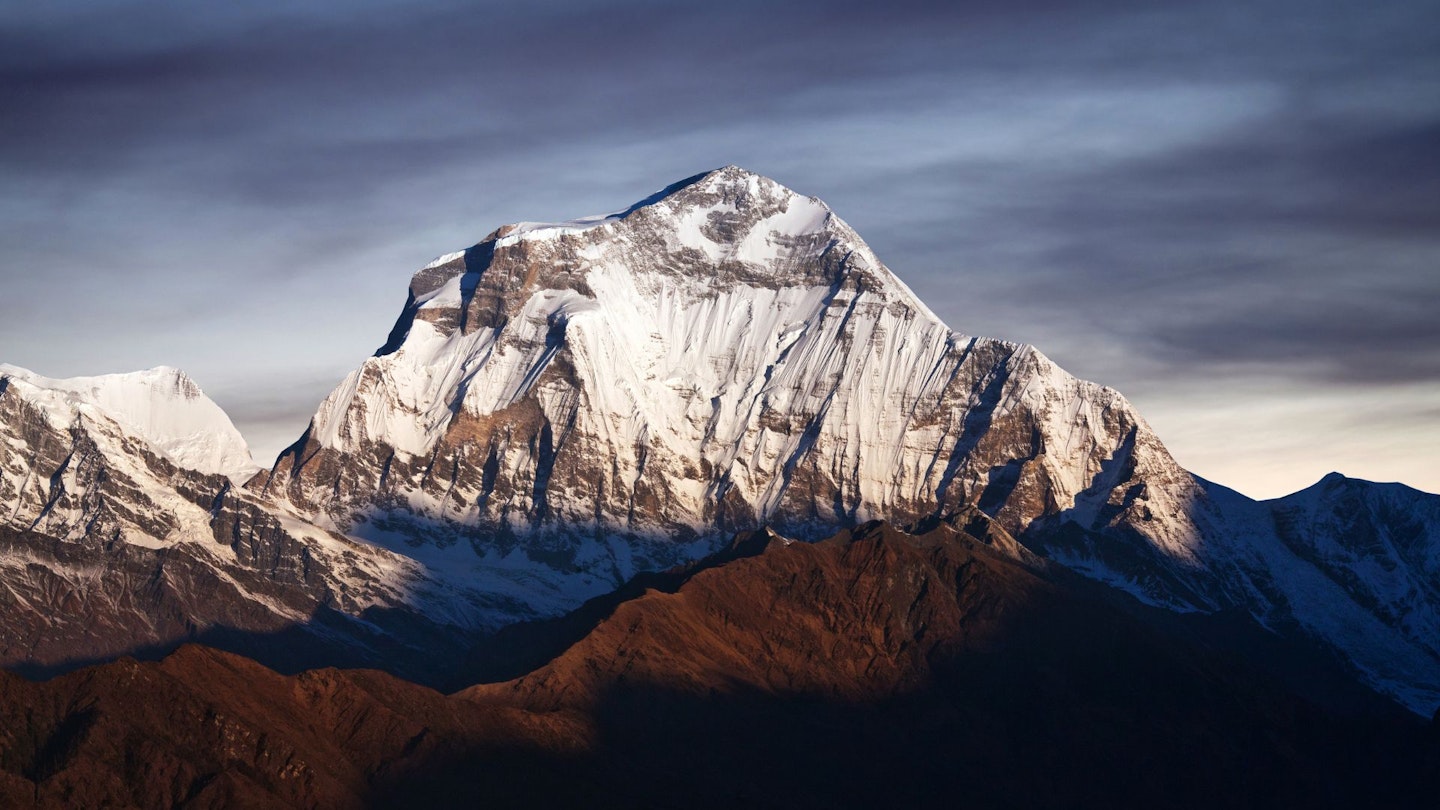
Height: 8,167m (26,795ft)
First ascent: 13 May 1960 by Kurt Diemberger, Peter Diener, Ernst Forrer, Albin Schelbert, Nawang Dorje and Nima Dorje
Dhaulagiri (rolls beautifully off the tongue, doesn’t it?) holds the accolade of being the tallest mountain in the world that’s wholly within a single country’s borders.
This giant mountain was the last of Nepal’s 8,000ers to be successfully climbed when a Swiss-Austrian team, including the great Kurt Diemberger, claimed the summit in 1960.
The mountain has been the scene of several tragedies, including in 1969, when seven Americans were killed in an avalanche and in October 2024 when five Russians fell to their deaths.
8. Manaslu, Himalayas, Nepal
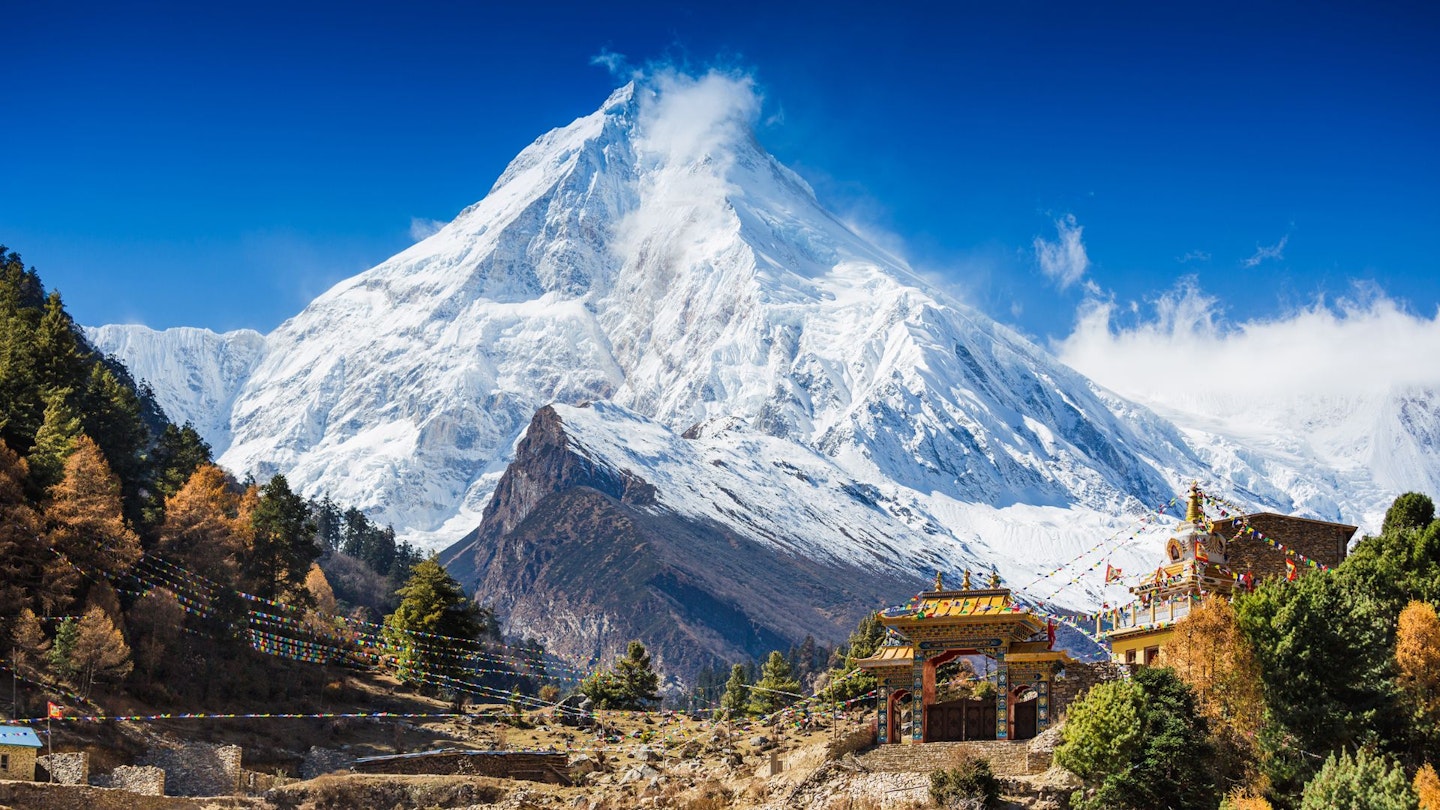
Height: 8,163m (26,781ft)
First ascent: 9 May 1956 by Toshio Imanishi and Gyalzen Norbu
Towering above Nepal’s Mansiri Himal, Manaslu is a beautiful, twin-peaked giant. It’s one of the more technically straightforward options among the highest mountains in the world for climbers to undertake, though the usual North East Face is still a monumental undertaking, with ominous seracs and a deliciously narrow snow arête to overcome.
The Manaslu Circuit Trek is a popular alternative to the more renowned trekking routes in the Everest and Annapurna regions, providing visitors an insight into a less developed but no less beautiful part of Nepal.
The crossing of the Larkya La pass, at 5,213m, is the spectacular high point of the hike.
9. Nanga Parbat, Himalayas, Nepal
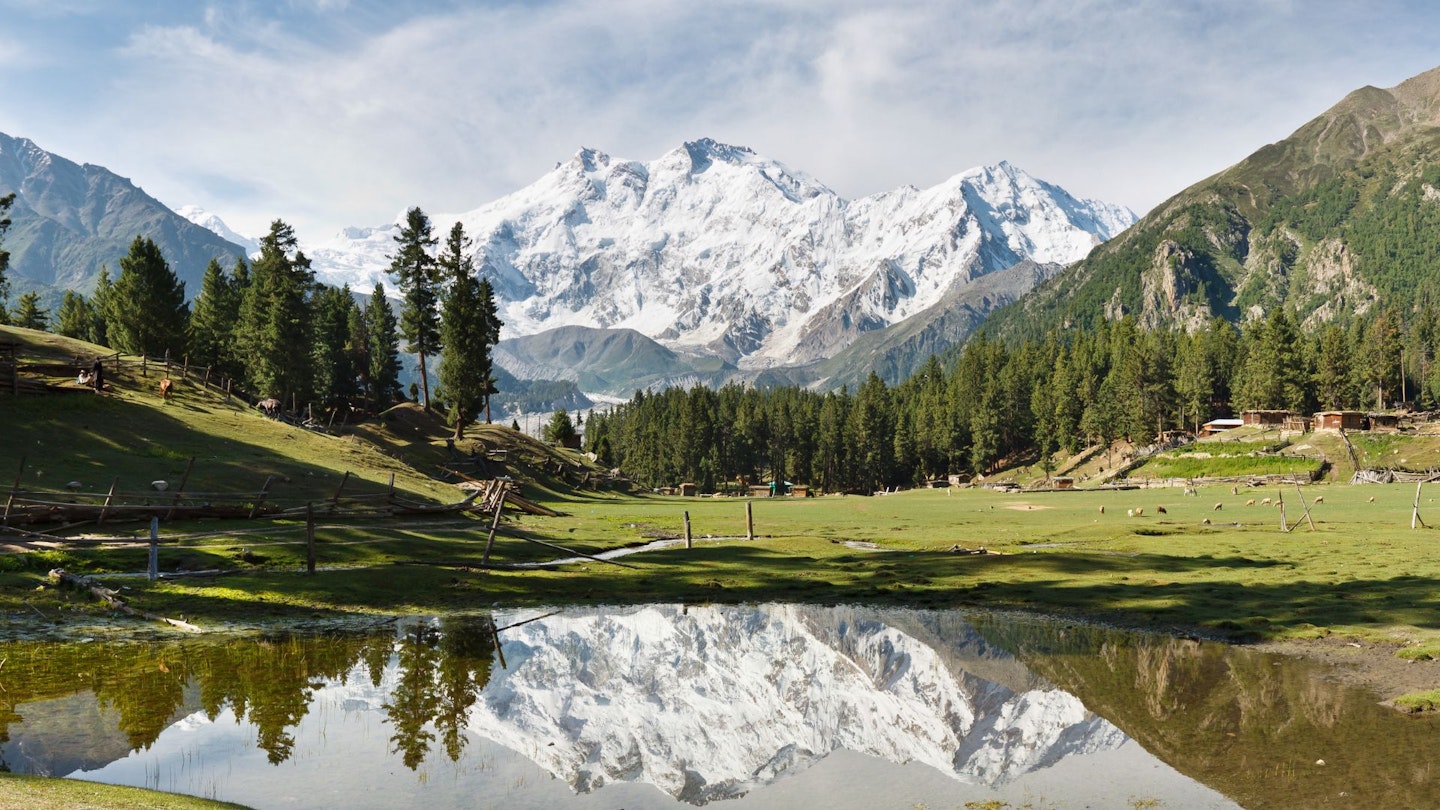
Height: 8,126m (26,660ft)
First ascent: 3 July 1953 by Hermann Buhl
In the far west of the Himalayas, Nanga Parbat vies with K2 and Annapurna as the world’s most deadly 8,000er. Sometimes referred to as the Killer Mountain, few peaks boast such a formidable reputation.
It’s home to one of the world’s most fearsome mountain features – the Rupal Face. Rising 5km from base to top, it’s thought to be the largest wall in the Himalayas, has been the scene of several remarkable stories and has never been climbed in winter.
The first ascent of Nanga Parbat was achieved in 1953 by the legendary Austrian Hermann Buhl, who achieved the summit solo (the first to achieve such a thing on an 8,000m peak) after an immense 41-hour effort.
The mountain also played a pivotal role in the life of Reinhold Messner, widely regarded as the greatest mountaineer of all time. Having climbed the Rupal Face alongside his brother, Günther, the pair attempted an unprecedented traverse by descending the Diamir Face.
Günther was swept away to his death in an avalanche and Reinhold lost seven toes to frostbite, ending his rock-climbing days.
10. Annapurna, Himalayas, Nepal
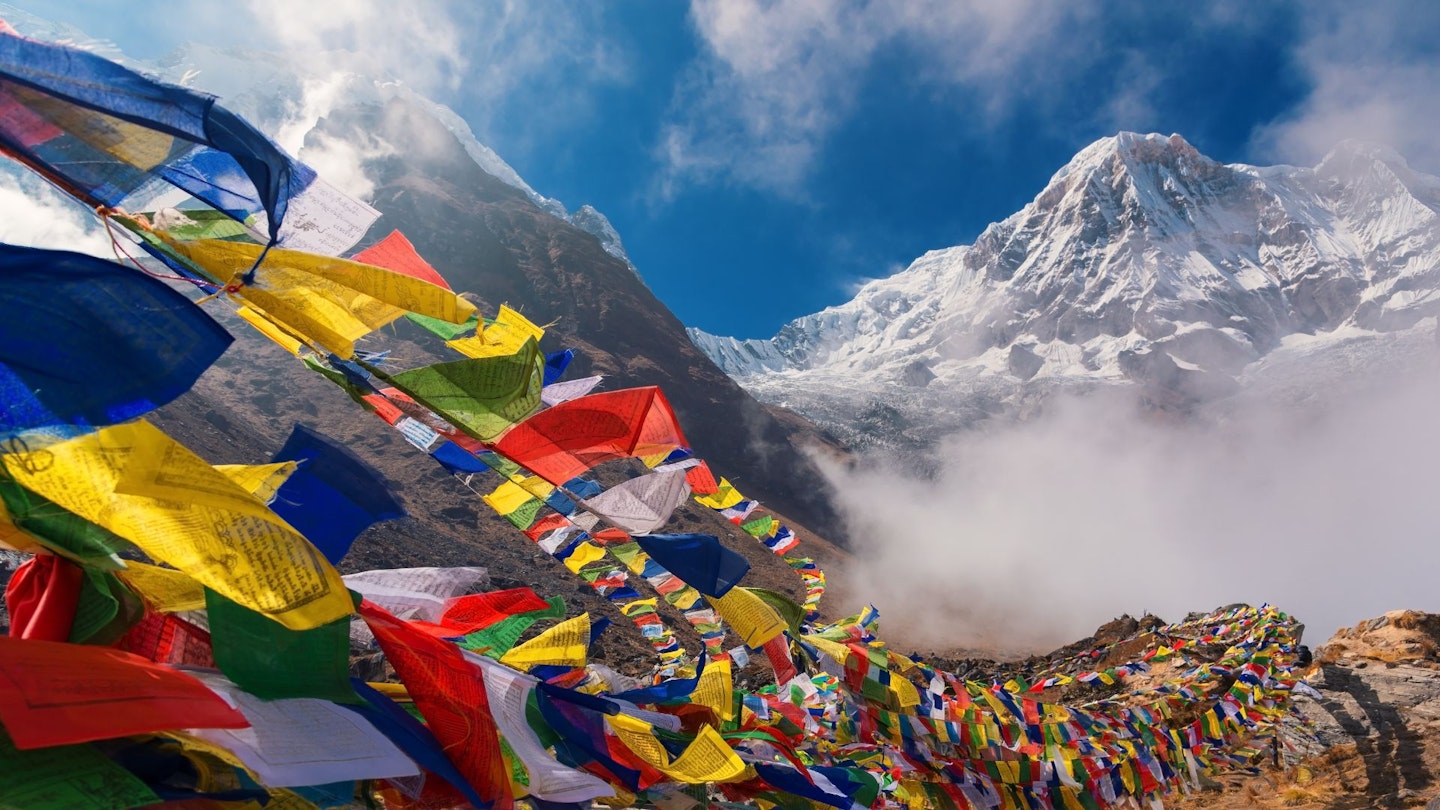
Height: 8,091m (26,545ft)
First ascent: 3 June 1950 by Maurice Herzog and Louis Lachenal
The first of the world’s highest mountains to have been climbed, Annapurna nonetheless ranks alongside K2 and Nanga Parbat as one of the deadliest.
A gargantuan, sprawling massif, Annapurna has multiple summits and, despite its dangers, continues to attract mountaineering’s elite despite a summit to death ratio in the region of 4:1 on its principle peak: Annapurna I.
The Chris Bonington-led 1970 British Annapurna South Face Expedition was notable for its bold ambition, purposefully seeking out a challenging route up an 8,000m mountain and placing Don Whillans and Dougal Haston on the summit.
Tragically, fellow climber Ian Clough was killed in an avalanche during the descent. In 1982, rockfall on the mountain also claimed the life of legendary British alpinist Alex MacIntyre at the tender age of 28.
The magnificent Annapurna region is popular with trekkers, with the Annapurna Circuit and Annapurna Sanctuary ranking among the world’s great hikes.
Another notable peak in the region includes the sacred Machapuchare, with its striking and forbidden ‘fish tail’ summit.
While not as impressive, the highest mountains in England offer some brilliant hiking, while the tallest peaks in Scotland serve up some fine wilderness.
About the author
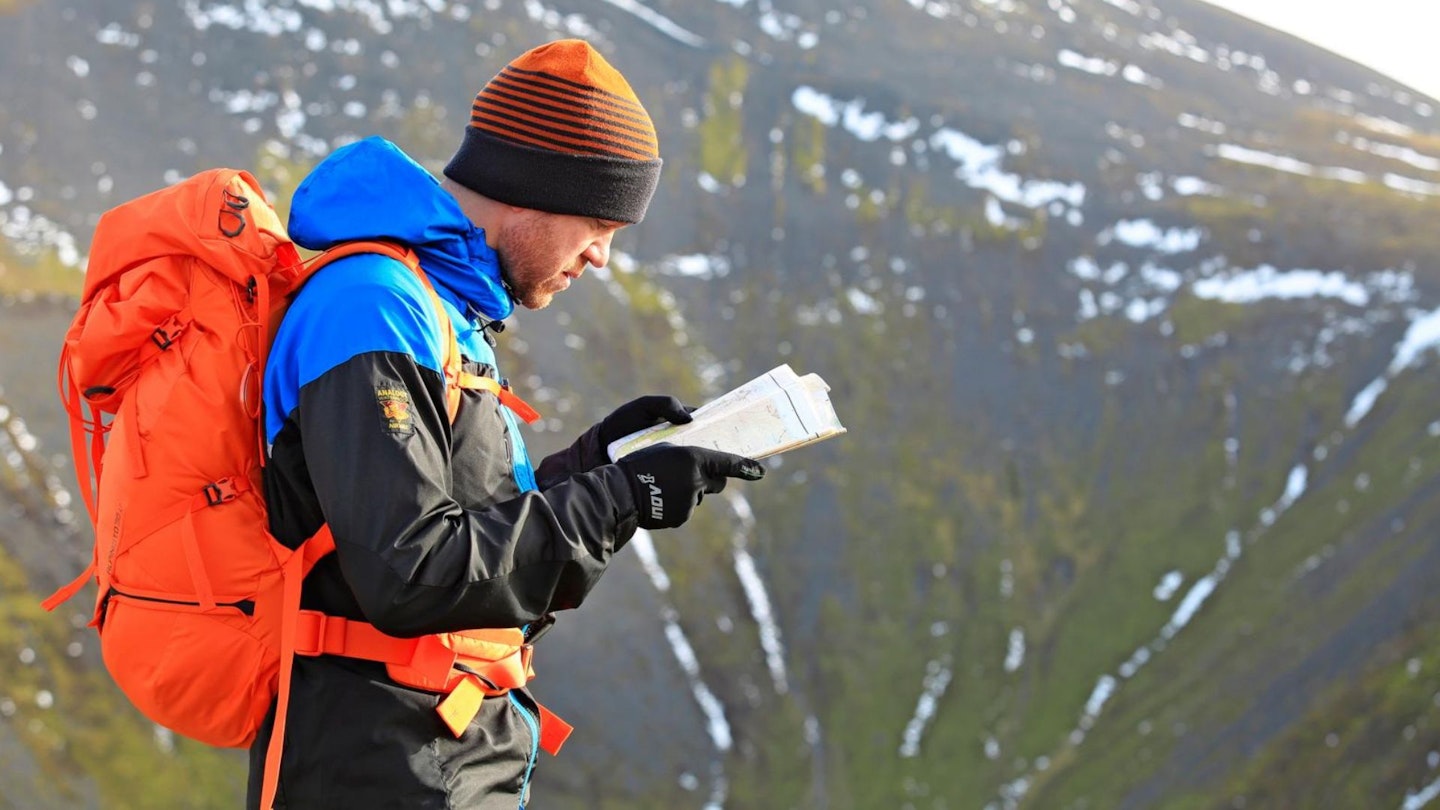
James Forrest is one of the UK's most experienced and knowledgeable outdoor writers. As well as being one of our primary freelance writers on LFTO and Trail Magazine, he is known for climbing all 1,001 mountains across the UK and Ireland in the fastest known time.
